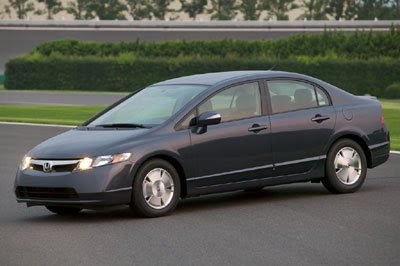 Hybrid cars like the 2007 Honda Civic Hybrid are designed for fuel efficiency and low emissions. See more hybrid car pictures
Hybrid cars like the 2007 Honda Civic Hybrid are designed for fuel efficiency and low emissions. See more hybrid car picturesHave you pulled your car up to the gas pump lately and been shocked by the high price of gasoline? As the pump clicked past $20, $30, $40 or even $50, maybe you thought about trading in your car for something that gets better mileage. Or maybe you're worried that your car is contributing to the greenhouse effect.
The auto industry has the technology to address these concerns. It's the hybrid car. There are a lot of hybrid models on the market these days, and most automobile manufacturers have announced plans to manufacture their own versions.
How does a hybrid automobile work? What goes on under the hood to give you 20 or 30 more miles per gallon than the standard automobile? And does it pollute less just because it gets better gas mileage? In this article, we'll help you understand how this technology works, and we'll even give you some tips on how to drive a hybrid car for maximum efficiency.





No comments:
Post a Comment